How to Speak Cat: Cat Body Language Decoded
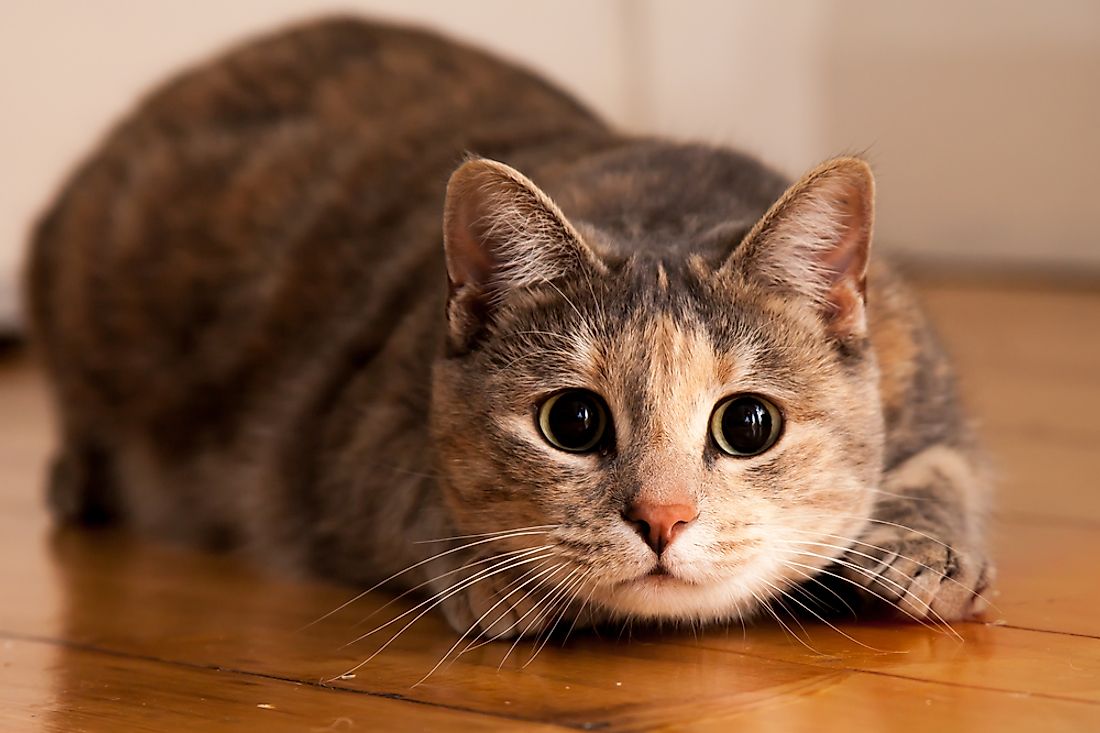
The cat is the closest animal to human beings. Cats are interesting creatures that communicate directly to their owners. Communicating with a cat is not simply a parlor trick that can be performed to amuse dinner guests. Cats rarely vocalize with other cats but reserve verbal interaction for humans. Cat language involves a complex mix of facial expression, tail and ear positioning, and other forms of body languages in addition to scent and sound. Some cats are vocal and have extensive vocabularies while others rarely speak or have one fit-it-all mode of communication. Here is how to speak cat.
10. Meowing
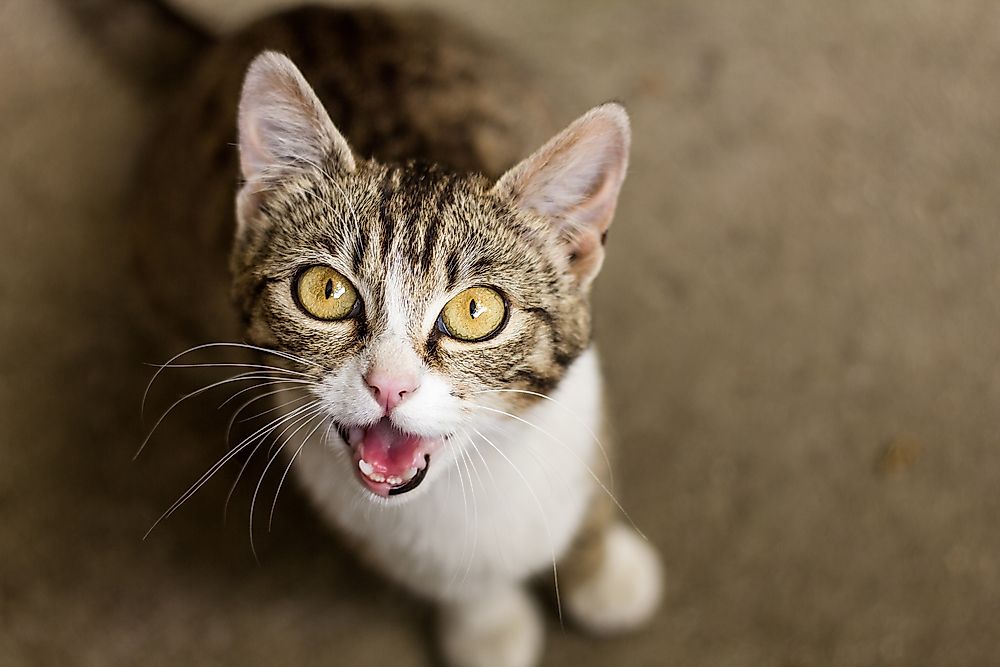
The meow is the most familiar vocalization of adult cats. Interestingly, adult cats do not meow at one another. Meowing is a way cats communicate to humans. Meow is an all-purpose sound and can be assertive, friendly, bold, attention seeking, complaining, or even welcoming. A short meow is considered a greeting while multiple meows express a cat’s excitement at seeing the host. A mid-pitched meow is kind of a plea for something. Cats also produce high-pitched meows to express anger and pain. To express dissatisfaction and complain about a discomfort, cats will produce a low-pitched meow.
9. Purring
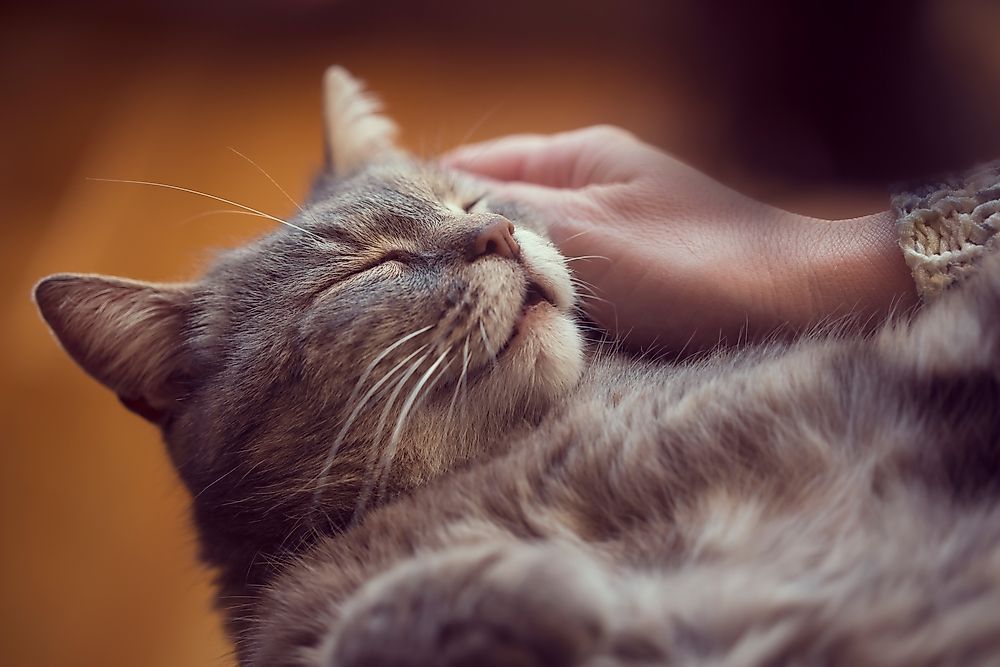
Purring is a continuous vibrating sound produced by cats of all ages. It indicates a positive emotional state of the cat. However, cats can also purr when they are unwell or experiencing a traumatic moment. Cats often purr when contented or happy, even when taking their meals. Cats can also purr to indicate the need for friendship or to show the owner they appreciate them for friendship. Cats purr at different frequencies, varying from egressive to the ingressive phase. Some domesticated cats may purr to hide their fear or as an instinctual response to hide a weakness from a predator.
8. Growling/Hissing
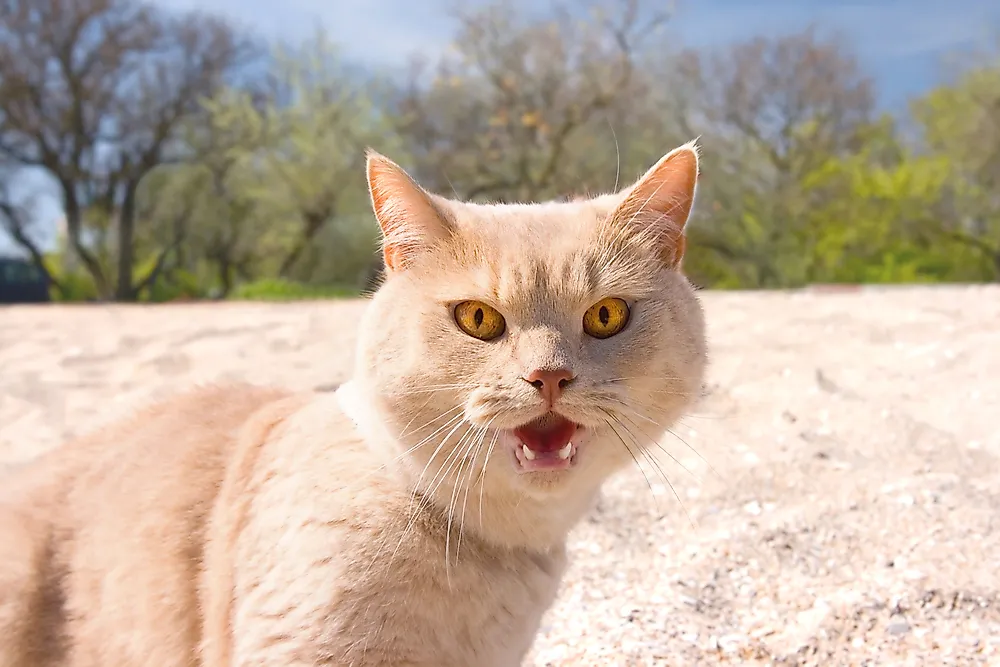
Growling and hissing are vocalizations associated with anger, displeasure, annoyance, or aggression. The sounds are produced whenever a cat senses danger and is preparing to fight back. Growling and hissing are always accompanied by a body posture intended to scare away the perceived threat. The communication may be directed to both humans and other animals including fellow cats. If the perceived threat does not respond to the hissing and growling, an attack by the cat may follow.
7. Chattering/Chittering
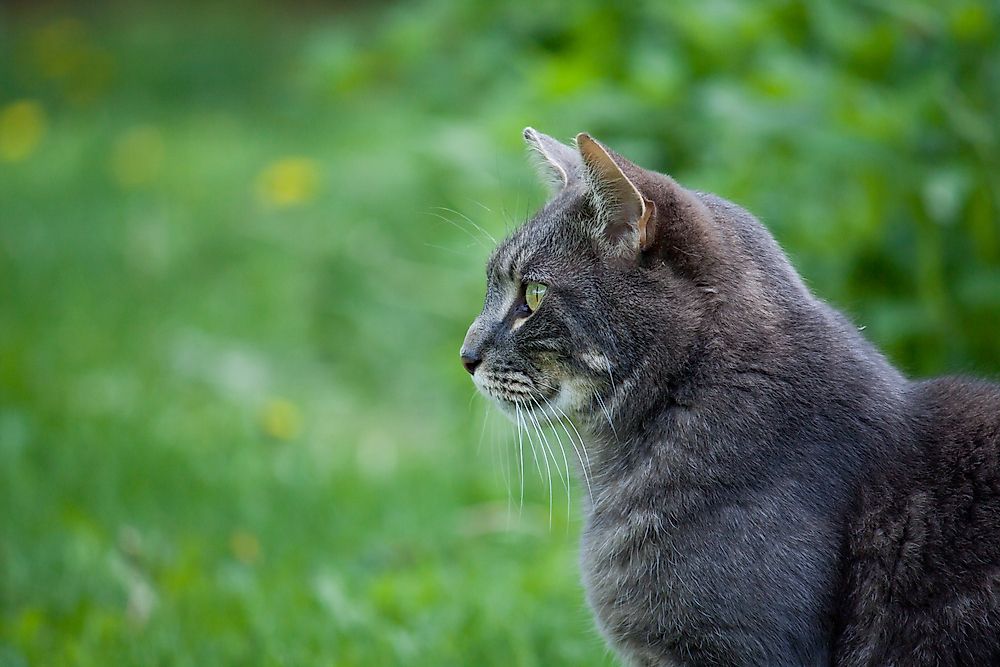
Cats often make exciting sounds, especially when observing or stalking a prey. This sound is often referred to as chattering or chittering and ranges from quiet clicking sounds mixed with occasional meows. During chattering, the cat opens its mouth slightly, pulls back its lips, and opens and closes the jaws very quickly. Some experts have suggested that the chattering sound is an exaggeration of the killing bite often produced when a cat grabs its prey by the neck while trying to work their teeth through the bones to kill them.
6. Ears forward
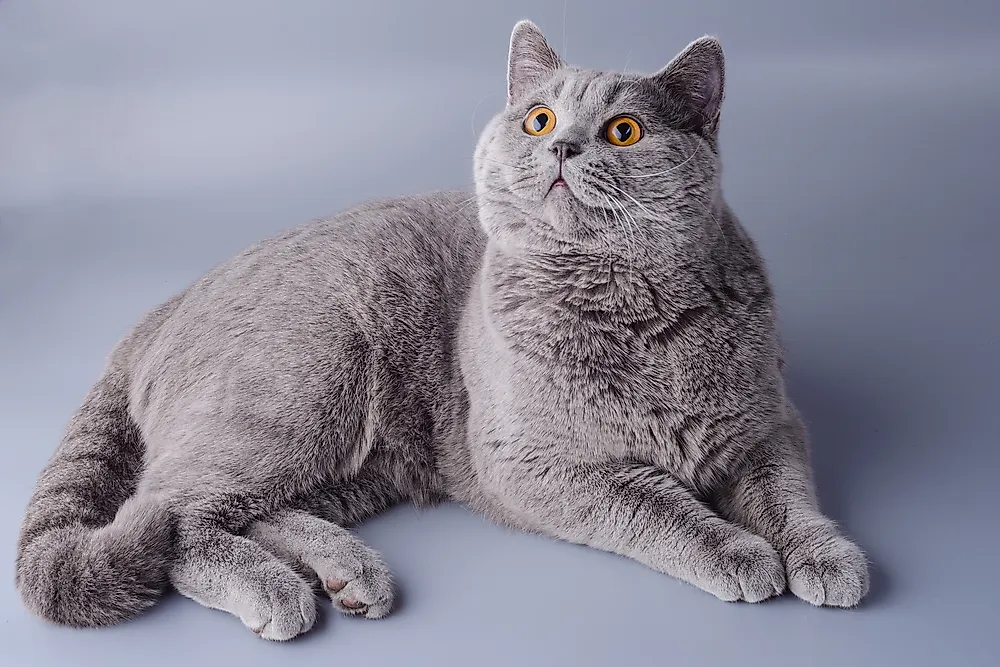
Cats can quickly change the position of their ears, from erect to slightly relaxed or flattened against the head depending on the situation. Cats are very sharp and a lot of things will catch their attention including a bird taking a flight, leaves dropping, or even wind blowing. When an interest is aroused in a cat, or when it is excited, the ears will assume a forward position. The forward position of the ears is also a form of friendly greeting, especially when the owner comes into a room.
5. Eyes dilated
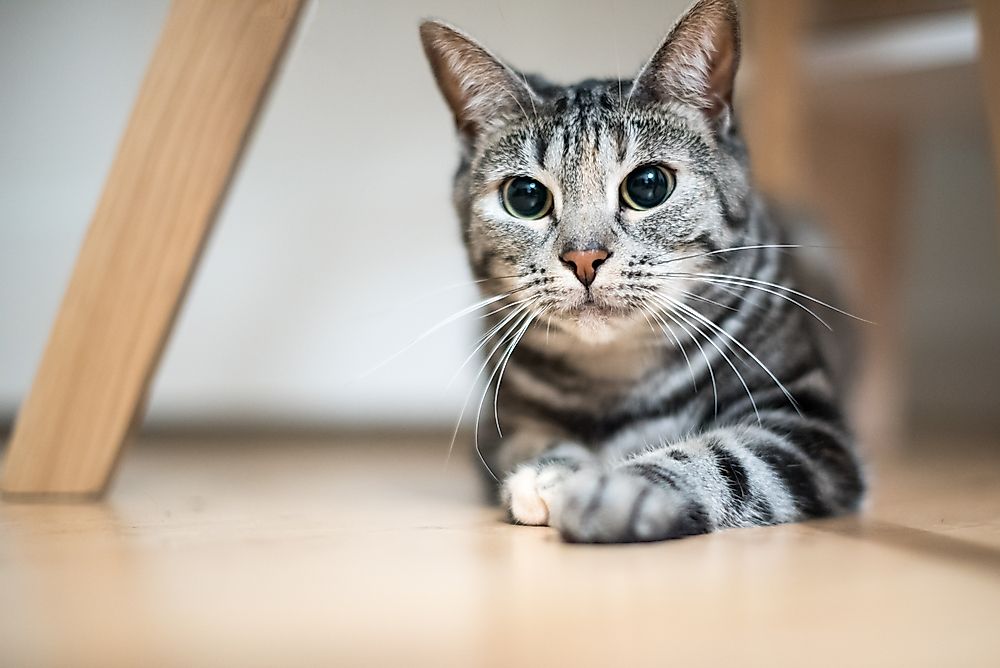
Cats communicate a lot using their eyes. Cat owners are able to read cat’s emotions and feelings by observing the cat’s eyes. A cat may look at the owner directly for a long time to seek their attention, or periodically while blinking to avoid provoking a defensive response. When a cat is surprised, scared, stimulated, or nervous, the pupils of the eye may somewhat dilate. However, the pupils may fully dilate if the cat becomes aggressive, defensive, or possibly playful.
4. Puffy tail
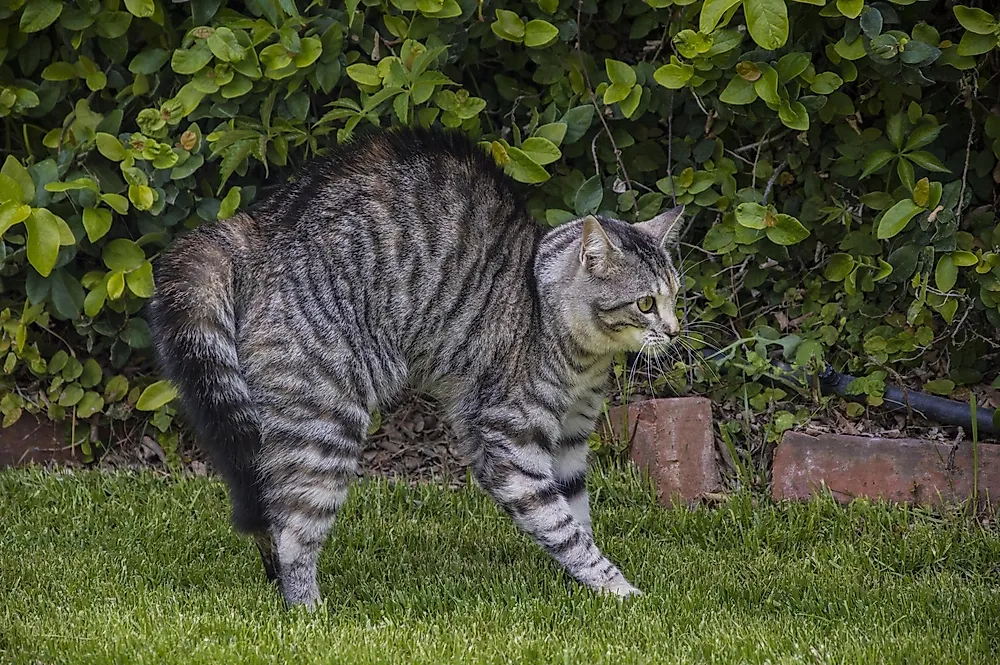
Cats also use their tails to communicate their feelings and needs. Watching tail movement and position is a great way to decipher how the cat is feeling. It may hold the tail vertically to express happiness and confidence or half-raise the tail to show dissatisfaction. The cat may also lazily swing the tail from side to side when in a relaxed mode. When a cat is angry or frightened, the tail will become puffy with the fur standing on end. A puffy tail means the cat is not in a good mood and is trying to appear larger than its usual size.
3. Back arched
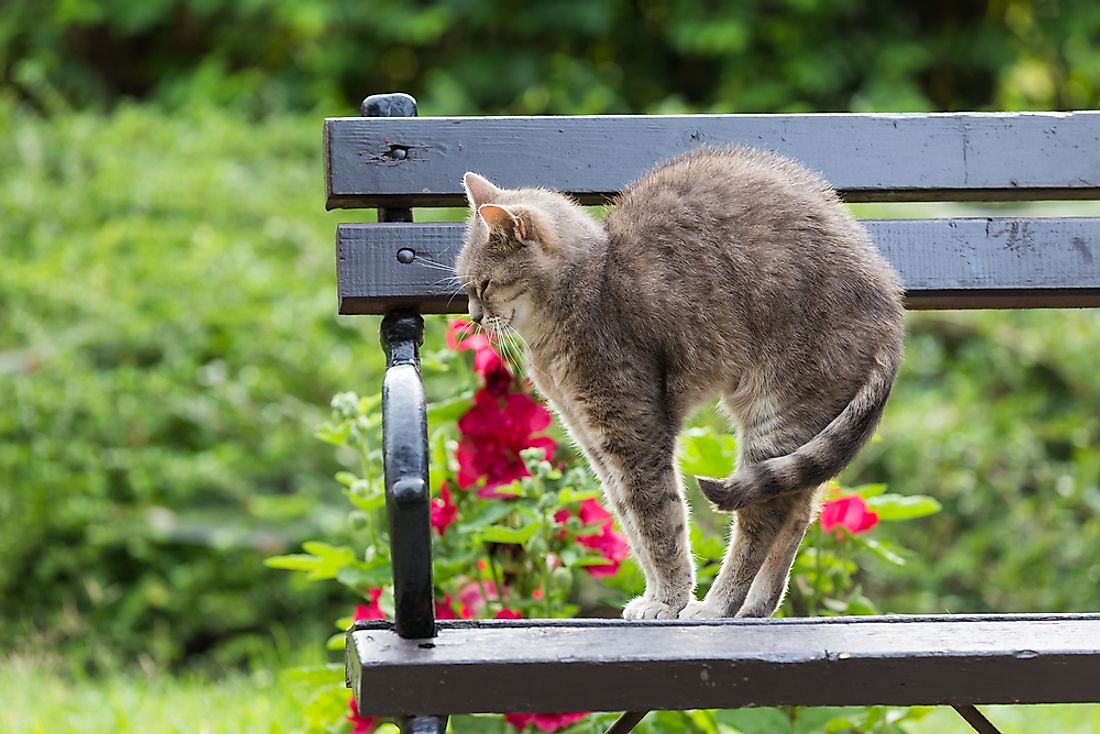
Not only does a cat arch its back while stretching the muscles after waking up from a long sleep, it is also a form of a complex body-language. Mostly, a cat will arch his back when it feels threatened or has sensed danger for which it needs to react or defend itself. The arched back is often accompanied by standing fur all over the body. The cat may also turn sideways with the back still arched to scare away the threat. The arched back may get so high since the spine contains 60 vertebrae which give great flexibility.
2. Kneading
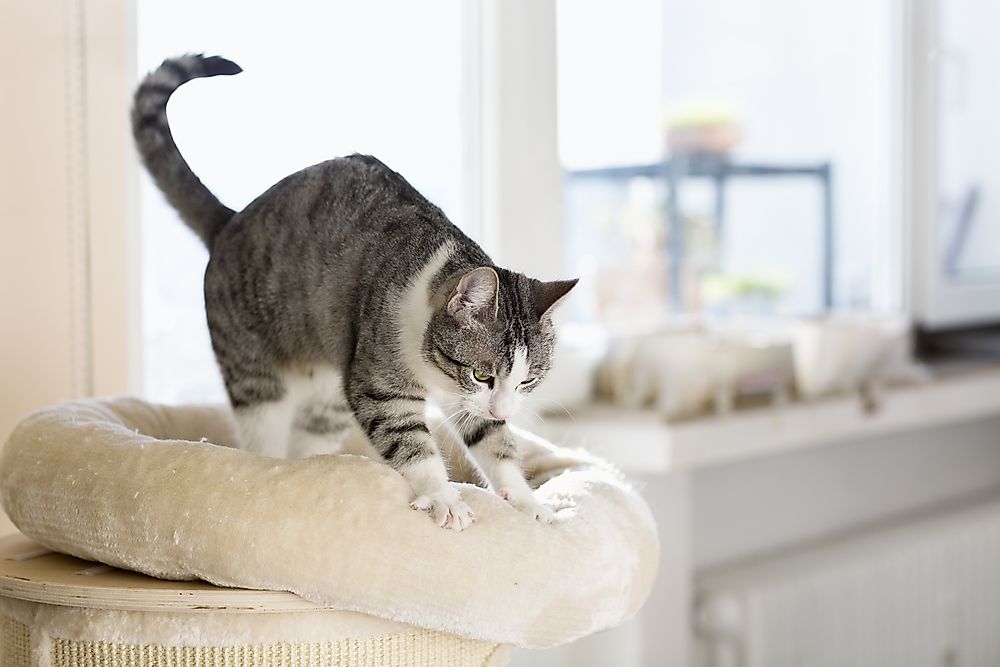
Kneading is the movement made by cats rhythmically by alternating their paws, pushing in and out against a soft object. Not all cats knead; the action is most common among young and adult cats. There are several reasons a cat would knead and purr contentedly. Most cats knead when being petted, especially when they feel love and affection. It is a way of returning the affection and telling the owner that he loves him right back. The kneading can be painful for the owner since the happier the cat is, the harder it digs in with its sharp nails.
1. Rubbing on legs
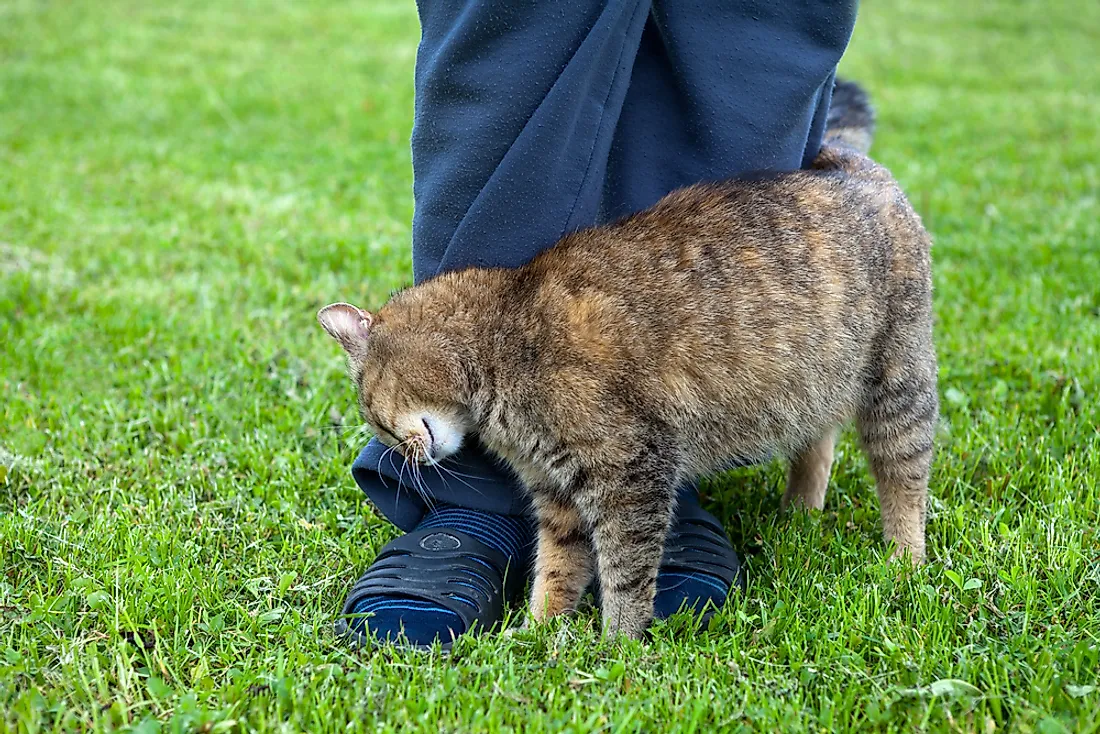
Cats are generally fond of humans and will do anything to attract their attention. Apart from meowing, a cat may rub his head or chin on legs of the owner or other objects to deposit his scent on them as a form of marking his territory. The cat uses glands on the forehead and around the mouth and chin to deposit the scents. The glands contain a chemical known as pheromones that are deposited by rubbing against the object. Cats are able to tell when the scent was left and the attention they need to pay to the warning.











